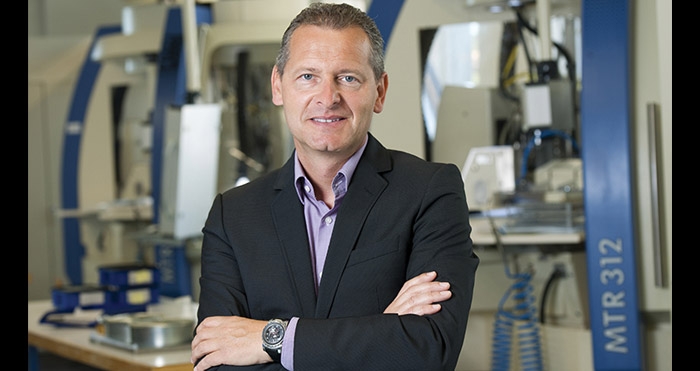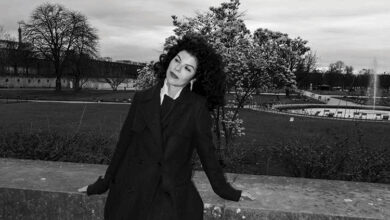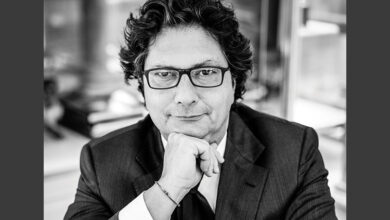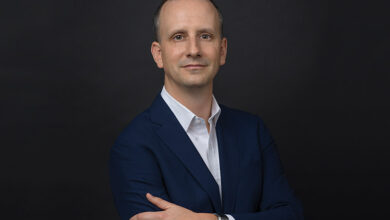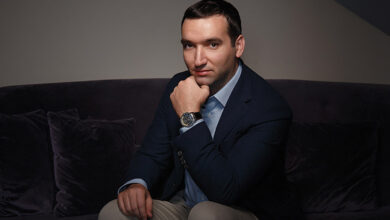Ulysse Nardin’s innovation is paramount
Born in November 1964, CEO of Ulysse Nardin, Patrik P. Hoffmann has taken over the reins from his predecessor Rolf Schnyder after he passed away in 2011. It was by chance that the pair met in Malaysia, where Hoffmann was working for a watch distribution company, Swiss Prestige Ltd
Mr. Schnyder was looking for a dynamic leadership personality with solid marketing skills and a thorough knowledge of the international watch industry to build up the market position of Ulysse Nardin in the USA. Schnyder and Hoffmann quickly realised that they shared the same vision and in 1999 he moved to Florida as the new Vice President and Managing Director of Ulysse Nardin. “Day & Night” Magazine paid a visit to the new Dubai Mall store and sat down with Mr. Hoffmann to find out a bit about the history of the brand and some upcoming news.
What have been some of the milestones that you have achieved since you joined Ulysse Nardin in 2011?
Well I joined Ulysse Nardin in 1999 but became the CEO in 2011. The biggest milestone I have achieved since then was building the American market. When I first joined Ulysse Nardin, there wasn’t a brand representation in America, but now it is the biggest market Ulysse Nardin has. After the tragic passing of Rolf Schnyder, I had a great responsibility to bear as there were several things we had planned to do; our priority was to change the structure of the brand to ensure it ran like clockwork under a management style company. Another priority was to re-label Ulysse Nardin as a Manufacture and to lead the team in the process of selling to the Kering Group. All of these milestones happened within a space of three and a half years, so I am proud to say that our team worked hard to make sure a smooth transition took place that did not disrupt the daily activities of the company.
How did the Kering acquire Ulysse Nardin?
The whole process started with Rolf Schnyder, who was already in contact with Mr Pinault to discuss the purchase of the brand. Both parties shared a common passion to work together and expand their respective portfolios so the sale of Ulysse Nardin was agreed. Aside from the accounting department who had a lot of work to do, the biggest challenge of this merger was for me as my role within the company changed. With four other management executives, we formed a group that were instrumental in each stage of the process; in the negotiations, the preparations and the due diligent process, to ensure that change wasn’t an abrupt one. We met the representatives from Kering a hundred times before we signed the papers, so we got to know each other well. Kering is very easy to work with, as it allows us to continue with the philosophy we stand by.

Was 2014 a good year overall?
With the sale of the company, it was a challenging but successful year. The sale of the company took a lot of energy out of management, so once the signature passed we were very relieved as we could concentrate on the main aspects of the daily business once again. The main highlight of 2014 was that we saw a lot of clear innovation that is constantly evolving. If you went to Basel last year and if you go later this year you will see that innovation hasn’t stopped. New mechanisms and escapements are housed in stunning timepieces that drives Ulysse Nardin forward.
Why has the company decided to open its largest boutique in Dubai?
Dubai is the hub of luxurious product trade, so it was essential that our brand is represent here. The Dubai Mall boutique was not really planned in terms of its size, as when the opportunity came, we accepted it without thinking about the floor space on offer. With thousands of visitors a day, we rationalized that a boutique in such a prestigious location would be an incredible feat for us and taking a pragmatic approach, we jumped right in regardless of the boutique size.
Are the any plans in the near future to open more boutiques?
In three weeks we are opening a new boutique in Miami, making a total of three stores in Florida. We do not look at the world map and try to fill gaps with our brand, we take a rational approach and think of the clients in that location and if it works, then we move forward.
Which would you say are your top 5 markets in terms of sales?
Our top five markets around the world would have to be United States as number one and then in no particular order; it’s Switzerland, Russia, Turkey and China and Hong Kong as one market.

How would you rate business in the Middle East in general?
The Middle East and Europe together make one quarter of our annual turnover. That means we haven’t tapped into the market as much as we could and should have. We are now in the process of rectifying that and have opened our new representative office here in Dubai. If our brand wants to expand its market base, then we have to have somebody who lives in the city and who knows the city very well, therefore an office becomes essential. Tourists, locals and expats all enjoy wearing our watches, however the sales figures change frequently. If you asked me about 18 months ago, then I would have said our biggest niche of clients come from ex-soviet union countries. Now, with the crash of the Euro, things have changed again and our client base is also changing. However, we are trying to focus of the locals and expats who live here, as trade from tourists is never guaranteed.
Briefly tell us about the new ‘Vivaldi’ timepiece. What was the inspiration behind it?
The Vivaldi is a unique musical watch that is different from our previous models as this model builds on the history of the brand. For the last 120 years, we have been producing mechanical chiming timepieces, like the minute repeater in vintage pocket watches, so this concept is not new to us as we are experienced in this field. The Vivaldi is an evolution of historical pocket watches with the movement being entirely built in-house. At present, we have a total of 13 calibers and more than 60 percent of our movements are built completely in-house. We project an estimated increase of this in 2018 when 95 percent of movements will be made in-house.



